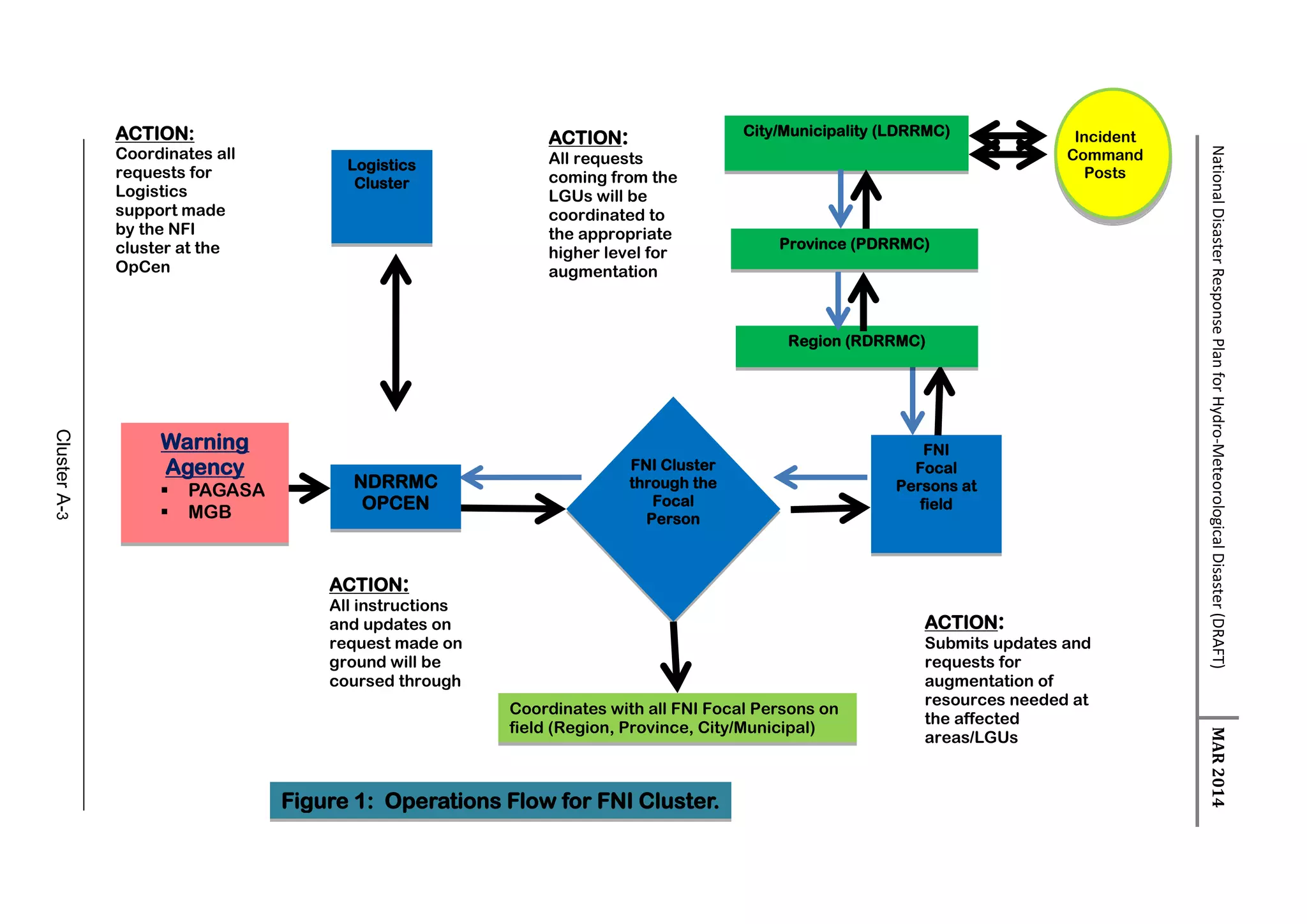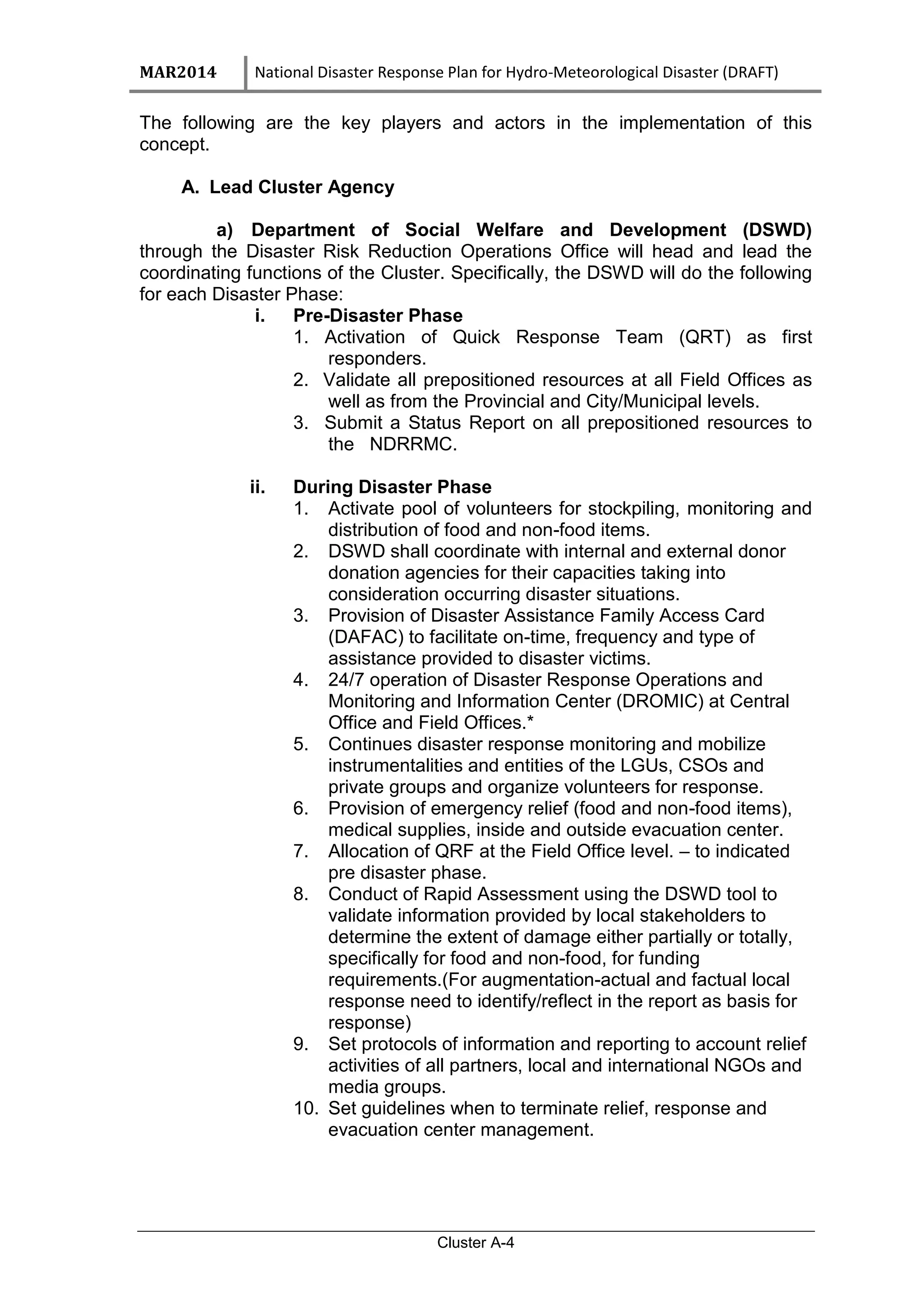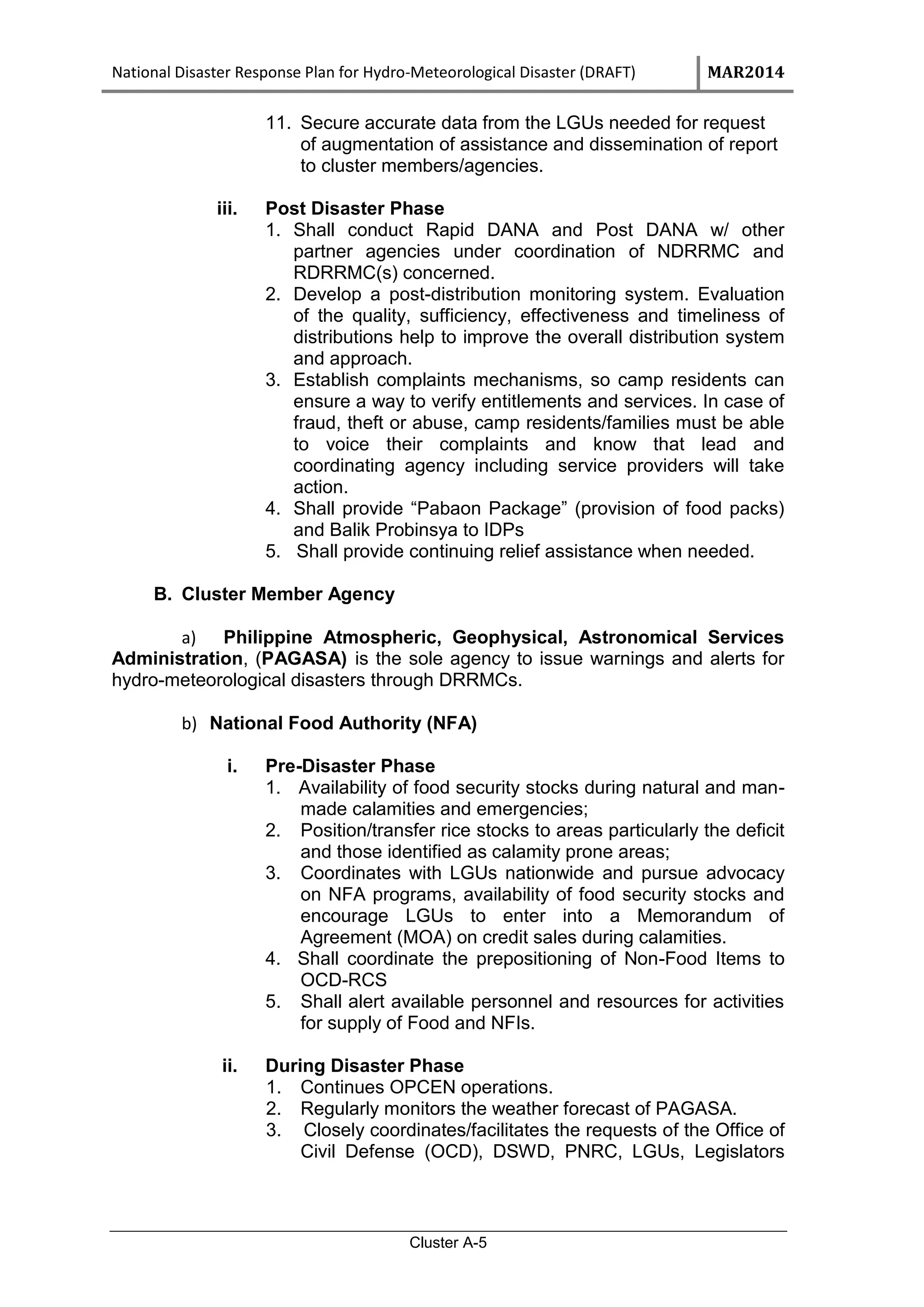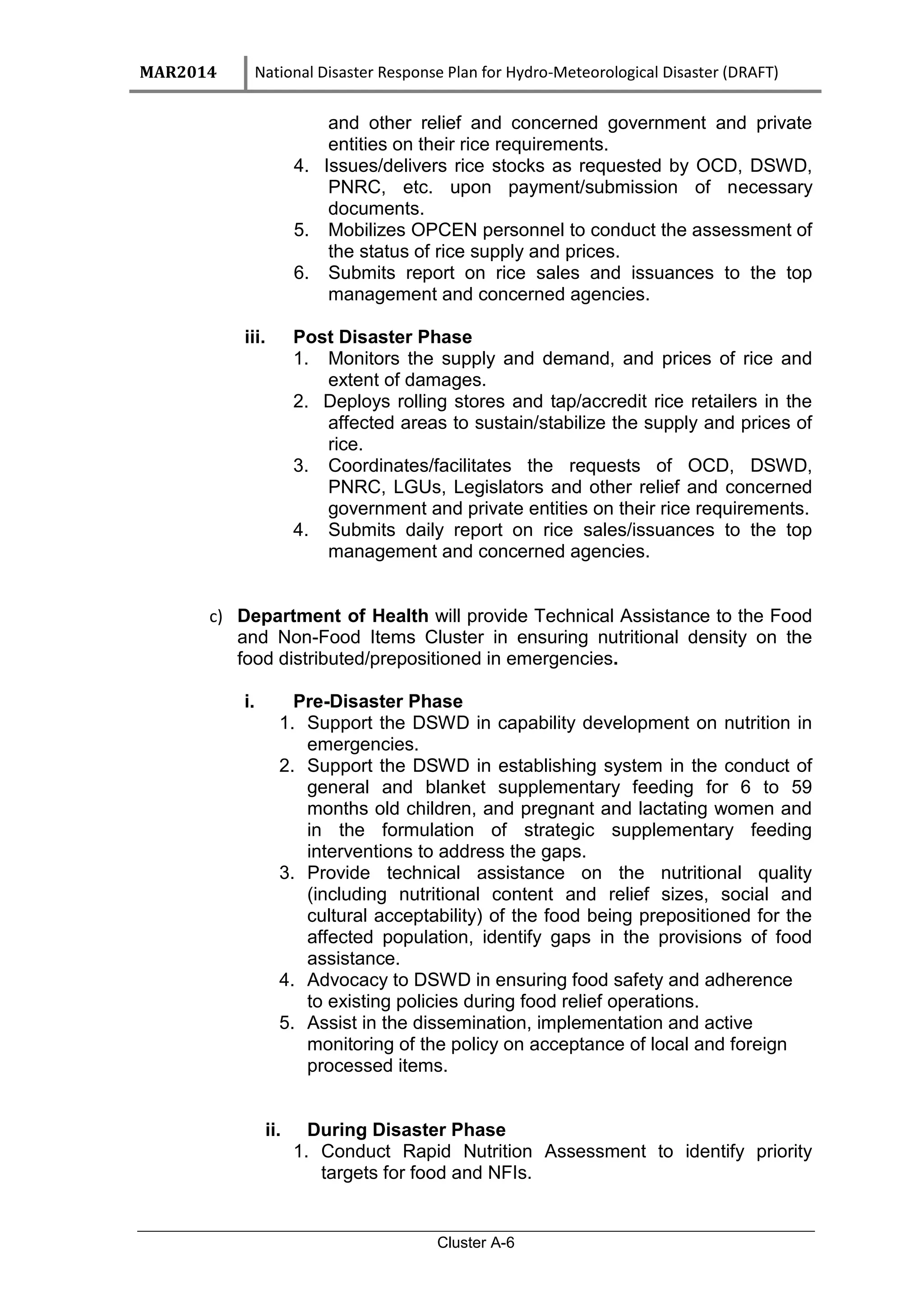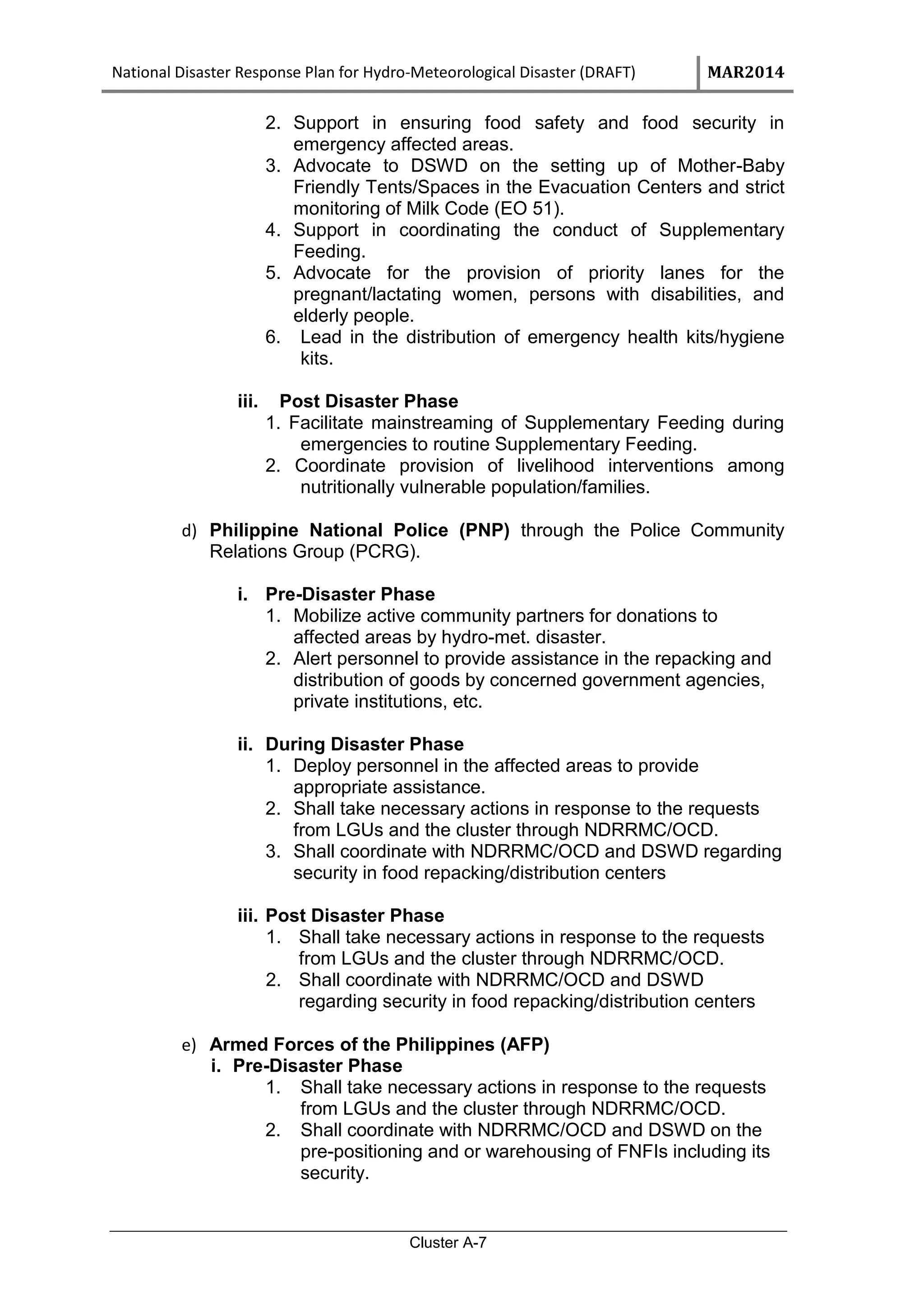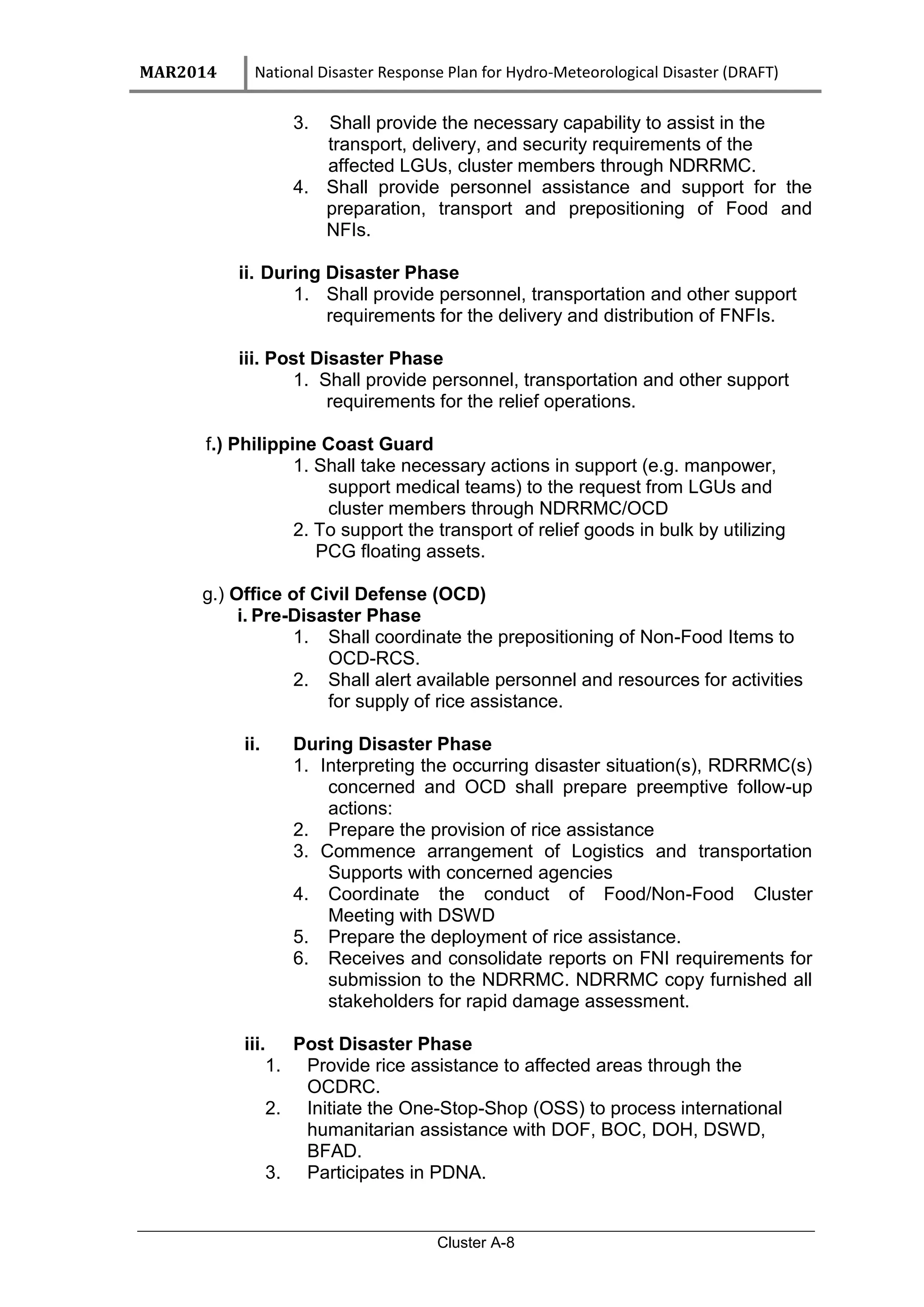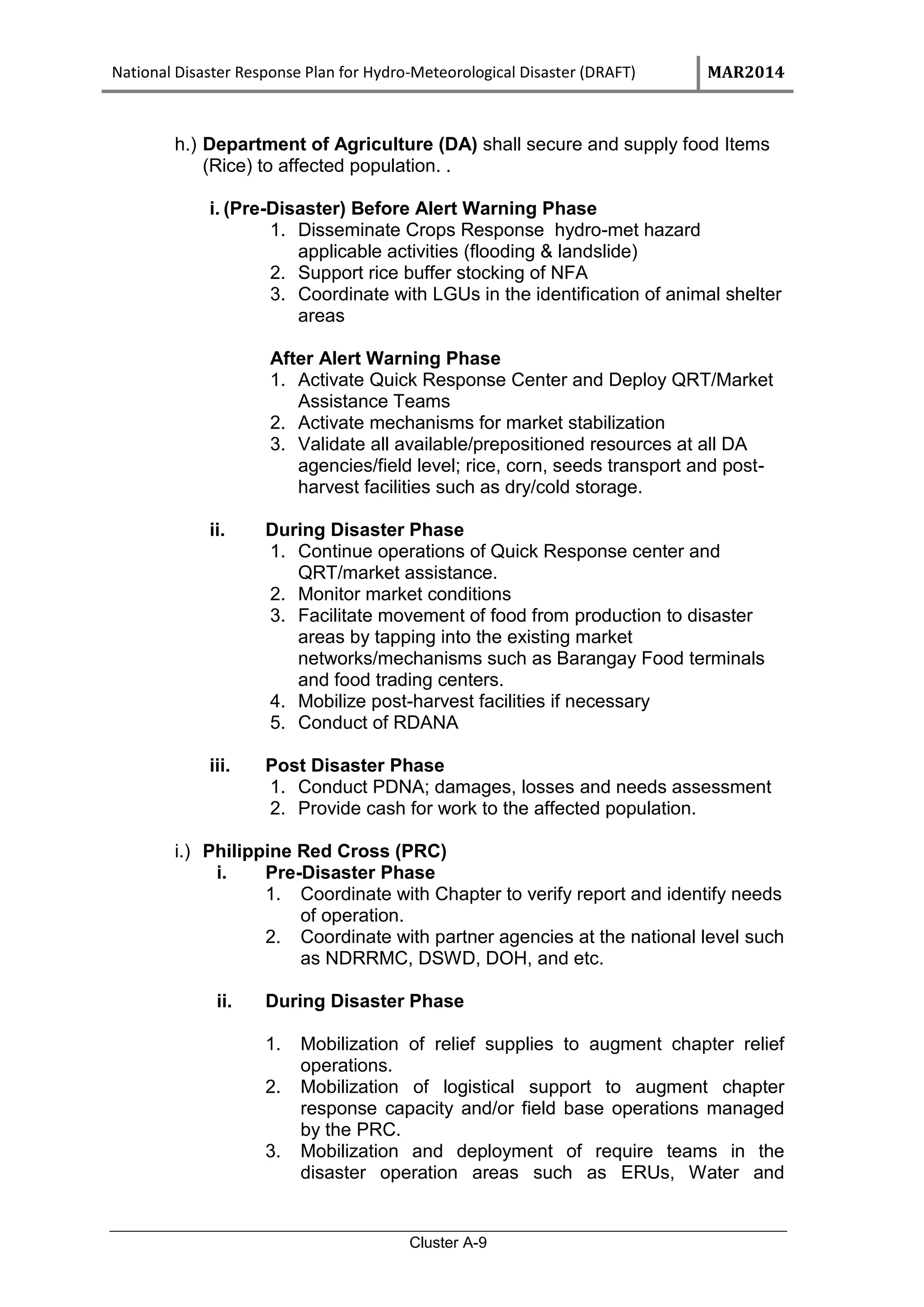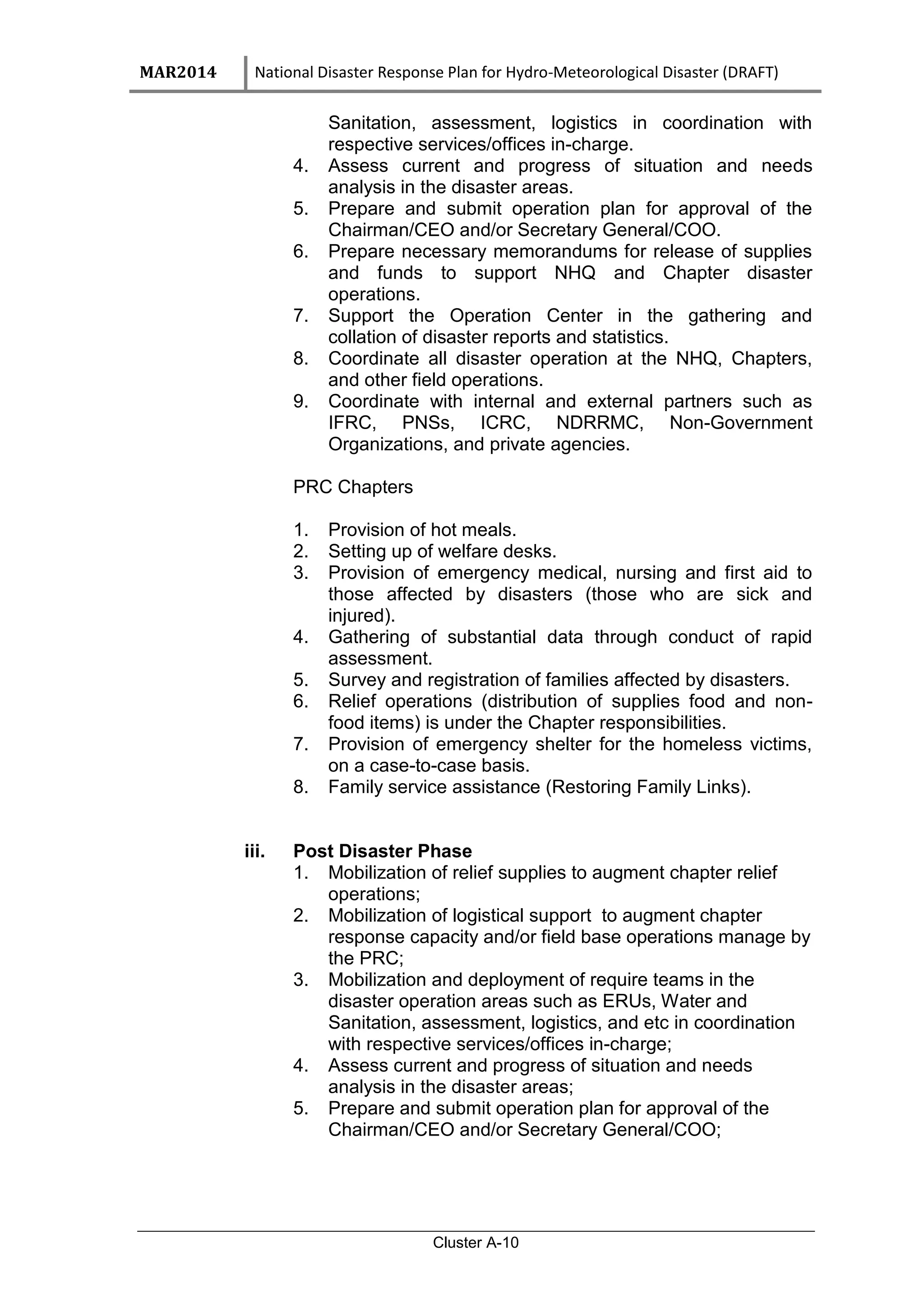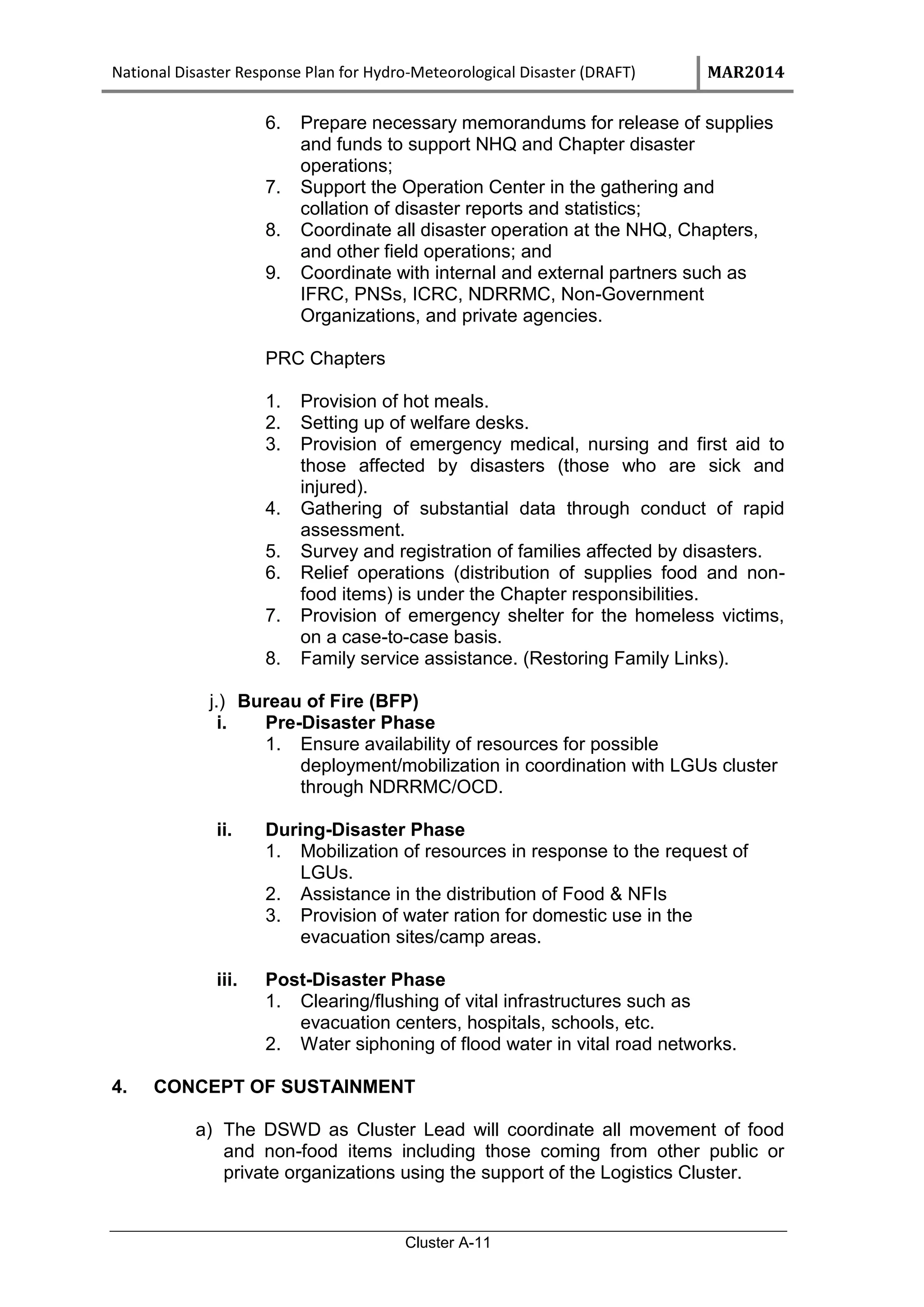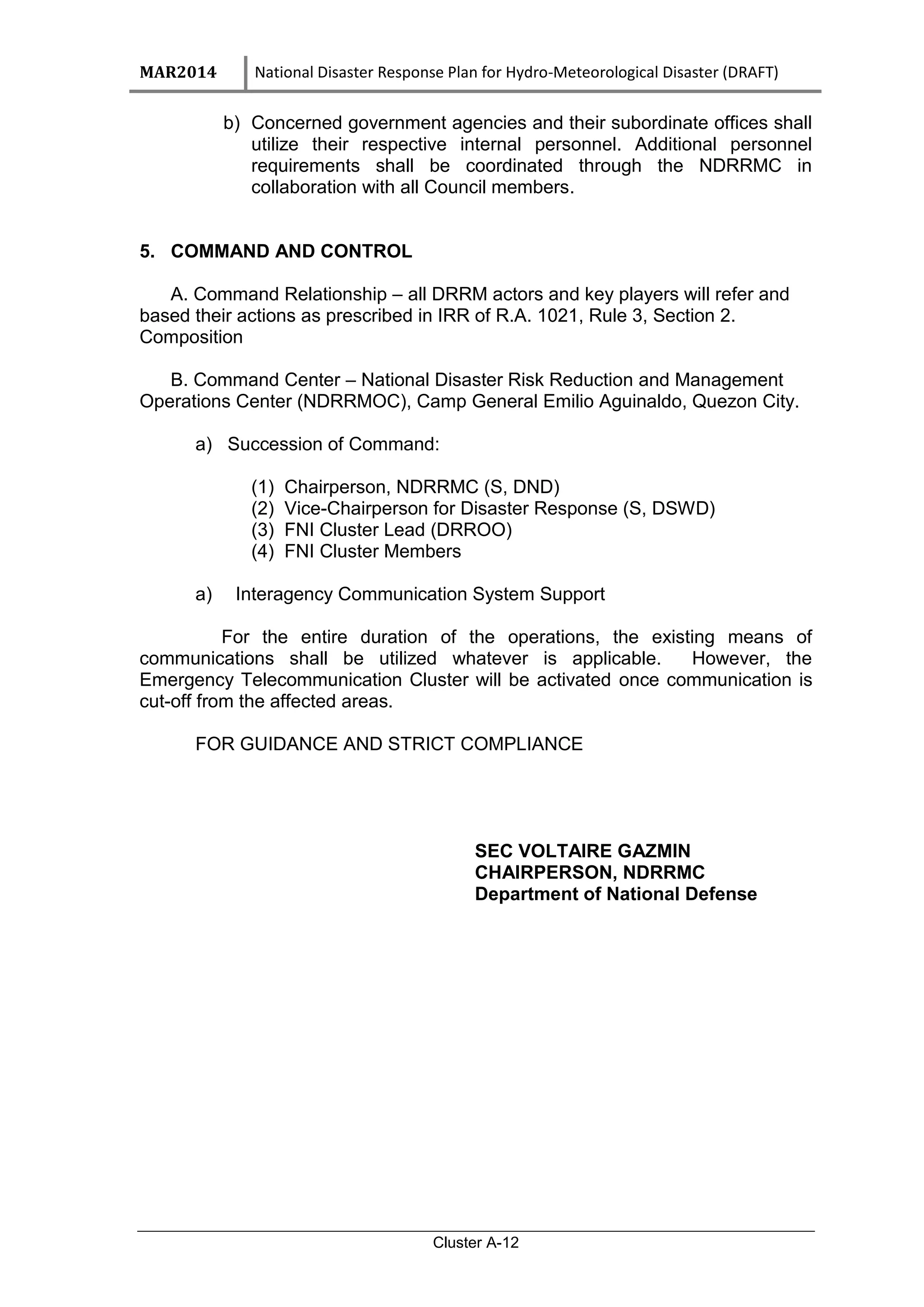The document outlines the National Disaster Response Plan for Hydro-Meteorological Disasters in the Philippines. It describes the operations of the Food and Non-Food Items Cluster, which aims to provide food, water and other daily necessities to affected populations during disasters. The plan details the objectives, concept of operations, and roles and responsibilities of various agencies involved in the cluster. It provides guidelines for pre-disaster preparation, emergency response during disasters, and post-disaster recovery operations to meet the food and shelter needs of communities impacted by hydro-meteorological hazards.


